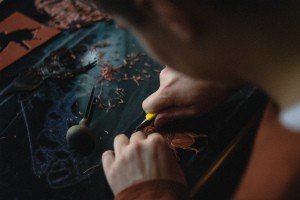 Creativity is regarded as a well-desired and important feature of a student, employee, and of any successful person. It stands for the ability to seek and find non-regular solutions to different problems. Creativity allows people better adjust to the ever-changing environment and, on a global scale, initiate progress. However, despite the positive findings associated with this trait, there can be also negative effects of creativity in regard to one’s social and individual performance.
Creativity is regarded as a well-desired and important feature of a student, employee, and of any successful person. It stands for the ability to seek and find non-regular solutions to different problems. Creativity allows people better adjust to the ever-changing environment and, on a global scale, initiate progress. However, despite the positive findings associated with this trait, there can be also negative effects of creativity in regard to one’s social and individual performance.
The main shortcoming of creativity is that it is often associated with psychological problems. For a start, there is a correlation between creativity and emotional imbalance. It has been long observed that artistic people are usually characterized by mood swings or distress. Almost every genius or a talented person had affective disorders, from Van Gogh to Bill Murray. There has always been a higher risk of suicide among famous artists (e.g. Jim Morrison and Marilyn Monroe, to name a few). So, while it is creativity that makes people’s stars shine brighter, it is often associated with their fading out.
There is also a quite popular psychoanalytic interpretation of creativity as sublimation, which is a defense mechanism. According to it, creativity can be reduced to a mental tool used by people to compensate for the inner lack of something such as confidence, love and affection, or the feeling of their own importance. This, however, does not contradict the fact that creativity has an intrinsic value. It simply suggests that creativity is associated with insecurity, which makes emotional instability more understandable.
Despite the fact that creativity helps with adjustment to new situations, creative people might experience problems with social adaptation or “fitting in”, especially when their social environments are conservative. In such settings, spontaneity can be perceived as eccentricity and even behavioral anomaly by others. While creative people have all the potential to become leaders of thought, those who lack energy for this can become outcasts. Similarly, not every workplace requires creative employees. In certain workplace environments, where routine activity, risk-free rational decisions, and standard solutions are practiced, creativity can be an obstacle rather than a desired feature.
Another vice of creativity is that it is accompanied with the distortion of reality. Imagination or associative thinking makes creative people see the world in a slightly different way than those whose creativity is less intense. Some creative people do not distinguish well between that which is desired and that which is present, truth and lies, fantasy and reality. Creativity can also interfere with the ability to focus on something important. Rather than prioritizing and concentrating on the most important element one at a time, creative people often lack the ability to suppress thoughts and impulses, which sometimes seem chaotic and uncontrollable.
While the global trends praise creativity and value it highly along with leadership, entrepreneurship, and other progressive traits, it has its shortcomings too. Not only it is often associated with mood imbalance and emotional instability, it can also lead to maladjustment in more conservative social environments, and counter productiveness. Thus, before promoting creativity trainings, the main cons and pros of the trait should be weighed in respect to each particular situation.
References
- Akinola M, Mendes WB. “The Dark Side of Creativity: Biological Vulnerability and Negative Emotions Lead to Greater Artistic Creativity.” Personality and Social Psychology Bulletin, 2008.
- Carson SH, Peterson JB, Higgins DM. “Decreased Latent Inhibition Is Associated With Increased Creative Achievement in High-Functioning Individuals.” Journal of Personality and Social Psychology, 2003.
- Cropley DH, Cropley AJ, Kaufman JC. The Dark Side of Creativity. Cambridge University Press, 2010.
Furnham A, Hughes DJ, Marshall E. “Creativity, OCD, Narcissism and the Big Five.” Thinking Skills and Creativity, 2013. - Gino F, Ariely D. “The dark side of creativity: Original thinkers can be more dishonest.” Journal of Personality and Social Psychology, 2012.
- Goncalo JA, Flynn FJ, Kim SH. “Are Two Narcissists Better Than One? The Link Between Narcissism, Perceived Creativity, and Creative Performance.” Personality and Social Psychology Bulletin, 2010.
- Schuldberg D. “Six Subclinical Spectrum Traits in Normal Creativity.” Creativity Research Journal, 2001.